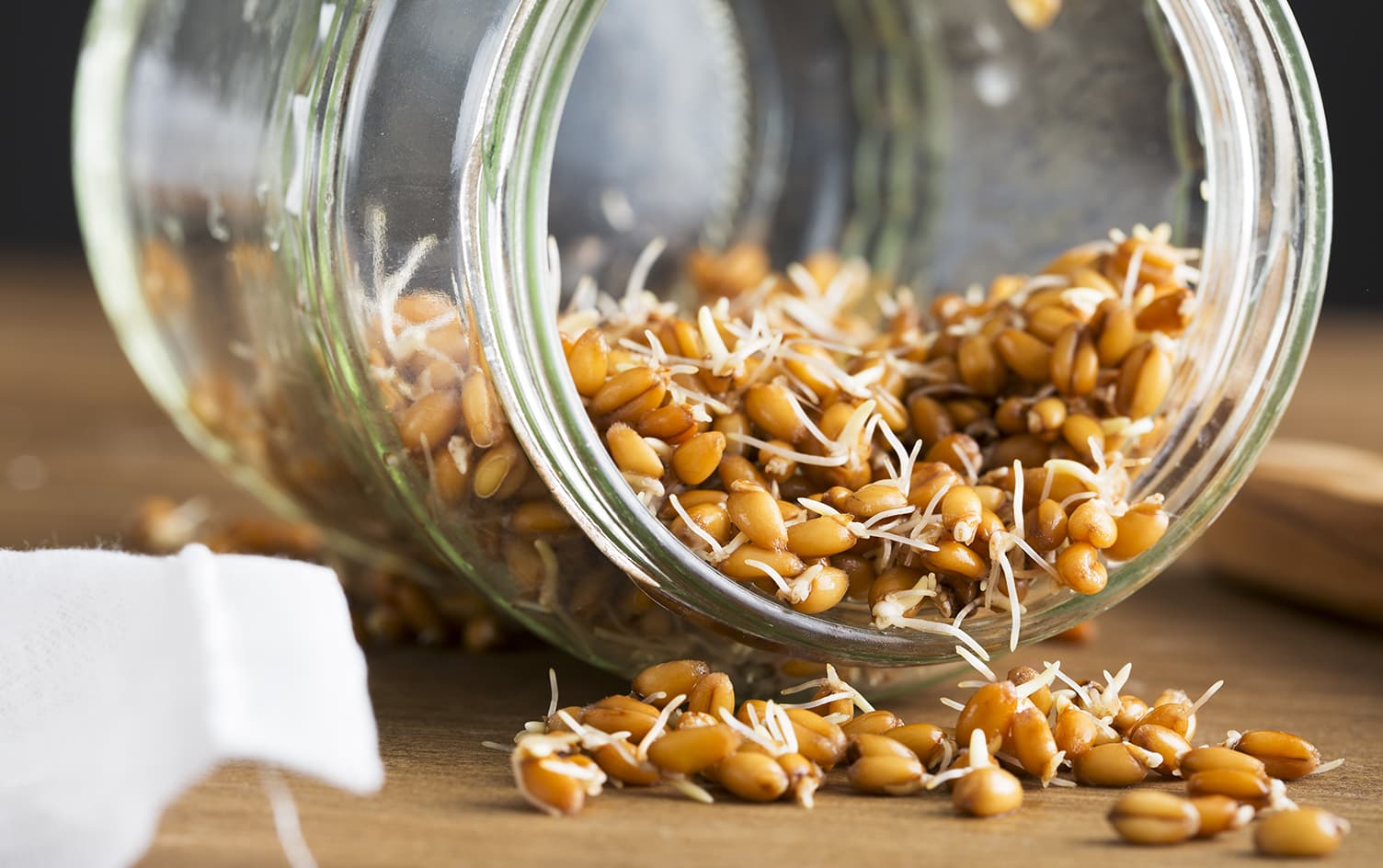Navigating the bread aisle these days is no walk in the park. With countless options — white, rye, sourdough, whole-wheat, multi-grain, gluten-free, sprouted and about a hundred other varieties — who’s to know what’s the healthiest choice? The latest grain craze in the health sphere is sprouted grains, which are touted to be a more nutrient-dense option than plain-old whole grains. We know that whole grains are healthier than enriched grains, but do sprouted grains live up to the hype? Let’s find out!
White Versus Wheat
There’s really no war on white versus wheat these days. Enriched “white” flour means that the whole grain (usually wheat) has been stripped of its outer layer (bran, germ and endosperm) to extend shelf life and lower costs. Unfortunately most of the fiber, protein and phytochemicals are also lost in processing. To combat this loss, nutrients like iron and B vitamins are added back in — that’s why it’s called “enriched” flour. Moral of the story? Go (whole-)wheat!
What exactly is a “sprouted grain?”
Sprouting is not a new invention — it’s what happens in nature when a seed starts to germinate. Grains by definition are seeds. When temperature and moisture conditions are just right, that seed can germinate and start growing into a new plant. This sprouting process also creates a more easily digested grain that also may increase the absorption of nutrients like B vitamins (including folate), fiber, vitamin C and amino acids. But wait, there’s more! Those with sensitivities to grains may be able to better tolerate the sprouted variety.
Does Sprouted Stand Out?
Indeed. The research is growing, but early studies suggest that there is a wide range of health benefits surrounding sprouted grains, from sprouted brown rice fighting diabetes to sprouted barley decreasing blood pressure. One study suggested that sprouting millet actually enhanced flavor! One caveat: Most studies have been conducted with animals rather than humans — but the body of research in humans is growing.
Also, keep in mind that just because a packaged food contains “sprouted grains”, this doesn’t necessarily make it healthy, or give you permission to disregard appropriate portion sizes. Sprouted grain cookies, anyone?
What sprouted-grain foods are available?
You can typically find sprouted grains, legumes and snacks in natural grocery stores as well as more mainstream markets, and usually beyond just the bread aisle. In addition to sprouted grain breads, look for sprouted grain pasta, tortilla chips, rice pilaf and sprouted whole grain flour for baking. If you can’t find sprouted grains in your local grocery store or find their pricetag a little beyond of your budget, keep in mind that foods made with 100% whole grains remain a great choice as well!




